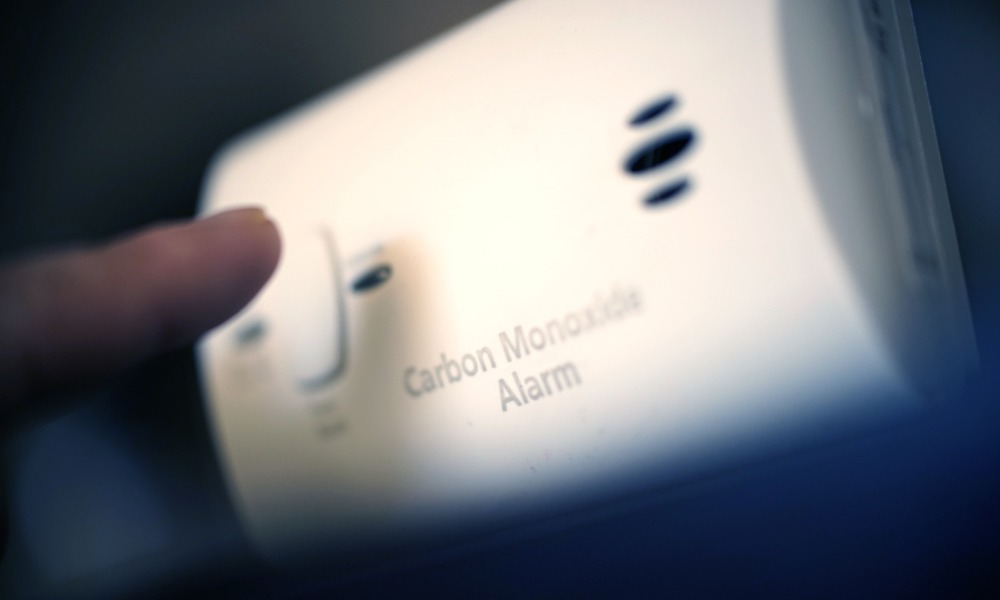Annual report outlines top five safety risks for employers in the province

Technical Safety BC has released its 2023 State of Safety and Annual Report, outlining the critical safety risks and priorities for British Columbia. The report provides a comprehensive analysis of incidents, injuries, and emerging risks over the past year, serving as a resource for employers and health and safety professionals aiming to improve workplace safety across the province.
"British Columbians should be able to trust that the places they work, live, and play are safe," said Phil Gothe, President and Lead Executive Officer at Technical Safety BC. "Our State of Safety and the Top Five Safety Risks highlight not only the areas of focus for our team but represent a call to action to all those across the safety system."
Top five safety risks
The 2023 report identifies the top five safety risks:
- Carbon monoxide exposure: Carbon monoxide (CO) exposure remains the highest safety risk in British Columbia for the second consecutive year. In 2023, there were 17 incidents involving CO exposure, up from 10 in 2022, including one fatality. A survey revealed that 42% of homeowners lacked CO detectors, despite many owning gas appliances. "Carbon monoxide exposure happens more in home settings, unfortunately," noted Gothe. "The most immediate and important element of any home setting is having a carbon monoxide detector. This applies to workplaces with gas appliances as well."
- Electrical safety: Electrical fires and shocks are significant concerns. Incidents often involve licensed electricians working on energized equipment without proper protective gear or unlicensed individuals handling electrical tasks. "We’ve seen incidents where the improper use of electrical appliances has led to fires," Gothe explained. "The misuse of heaters, extension cords, and power bars by homeowners highlights the need for proper training and awareness."
- Gas line strikes: Safe excavation practices around gas lines are critical to prevent potentially deadly incidents. Proper procedures must be followed to avoid accidental gas line strikes.
- Ammonia safety: Ammonia safety is particularly relevant in industrial settings. Ammonia leaks can pose severe health risks, as demonstrated by past incidents, including significant releases caused by equipment strikes. Gothe highlighted a recent case: "A forklift operator struck a roof panel, causing an ammonia line to release 1,000 pounds of ammonia. Thankfully, no one was injured, but the incident underscores the need for awareness and proper training."
- Electrical fires: The improper use of electrical appliances continues to be a leading cause of house fires. "The majority of incidents we investigated involved homeowners misusing heaters, extension cords, and power bars, leading to fires in family homes," Gothe said.
Key statistics for health and safety professionals
The report also provides essential statistics:
- Incident data: The report analyzed data from the past five years, considering the likelihood and severity of incidents.
- Decrease in reported incidents: A total of 398 incidents were reported in 2023, showing a decrease from previous years. Factors contributing to incidents included human error, lack of appropriate signage, and failure to follow safety protocols.
- Permits issued: In 2023, 116,369 operating permits and 143,673 installation permits were issued, with a 3% increase in operating permits and an 8% decrease in installation permits compared to 2022.
- Assessments and hazards: Technical Safety BC completed 54,746 assessments in 2023, identifying 8,588 hazards.
- Incident investigations: Of the 59 incident investigation reports published in 2023, nine were influenced by extreme weather or emerging green technologies.
Implications for employers
Employers and health and safety professionals are encouraged to take proactive steps to address these risks. Regular maintenance of gas appliances, proper use and training regarding electrical equipment, and strict adherence to safety protocols are recommended.
"Employers have a responsibility to ensure a safe working environment," emphasized Gothe. "This includes regular checks and maintenance, using licensed contractors for installations, and fostering a culture of safety awareness. It's a shared responsibility across all participants in the safety system."
Moving forward
The State of Safety report serves as a resource for understanding and mitigating safety risks in British Columbia. By addressing these key areas, employers and health and safety professionals can work to reduce incidents and enhance safety.
"Our goal is to enable and empower people to make the right decisions," concluded Gothe. "Together, we can maintain and improve the safety system that protects us all."





